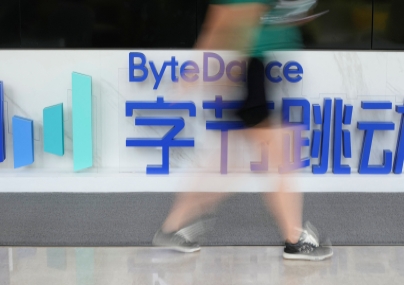
6月初,上海在奥密克戎疫情影响下持续两个月的严格管控措施终于得到放松,企业逐渐恢复生产,国际航运、空运能力逐步复苏。鉴于上海在全球供应链中扮演的重要角色,以及其作为中国空运重镇、世界级港口的地位,此番操作波及甚远,再次将供应链韧性问题带回公众视野。
5月中旬,彭博社在统计了全球多国企业2022年第一季度财报后发现,超过180家企业在其中提到了“中国”和“封锁”字眼,指出上海自3月中旬开始的疫情管控措施对企业供应链稳定造成了极大影响。
彭博社随即列出一份受影响企业名单,其中不乏行业巨头,如汽车制造领域的丰田、本田、大众、福特、特斯拉;消费领域的资生堂;制造业领域的LG、通用电气、奥林巴斯、索尼等。其中丰田财报指出,受上海管控影响,其日本生产线在5月曾短暂停产6天;特斯拉上海工厂则在4月停产三周,该工厂当月出货量由6万台直降至1500台。
物流集团DHL货运业务负责人则在一篇采访中告诉路透社:中国管控措施对于全球供应链的影响甚至超过了俄乌冲突。
潘怡安律师是奋迅·贝克麦坚时联营办公室高级顾问,在国际贸易及供应链领域有超过15年工作经验。潘律师工作并生活在上海,在过去两个月对企业供应链所受影响有着第一手观察。
“无论高科技领域或传统制造业领域客户,他们都不同程度受到上海管控措施的影响,供应链经受的挑战来自多个方面。”潘律师说。
在进口层面,“虽然管控期间上海大多数港口和机场还在运营,但我们听说有些港口会优先为集装箱货物清关,高科技企业通常使用的国际快件运输方式的货物则要往后排。有些情况下,即便货物已经到港,也很难在管控下实现最后一公里运达”。
出口层面则更为困难。潘律师说:“大多数制造工厂仅维持了最低限度运营,或者干脆停产。我们确实听说这扰乱了一些跨国企业客户的全球供应链。”
谈到受影响客户向律所寻求了哪些紧急协助,潘律师指出大体可以分两类,一类和货物延迟引发的合同纠纷相关,另一类则和海关执行的通关便利措施相关。
“海关的新措施能够加速进出口清关,同时降低企业在管控解除后的合规压力,客户希望知道自己是否能享受上述便利。”他说,“例如近期我们就在和海关进行协商,为客户的一起海关稽查案件寻求更轻缓的处理。”
重构“韧性供应链”
伴随上海在6月1日全面恢复正常生产生活秩序,据财新报道,上海港吞吐量已恢复约八成,上海及周边区域的集卡公路运输运力也已恢复至七八成,全球供应链似乎有望很快从“阵痛”中复原。
然而,运输之外,还要考量工厂真正的复工情况如何。DHL对此持审慎态度,其货运负责人告诉路透社:“从高科技到时尚产品,中国是全世界的工作台……即便管控措施不在,全球也将持续受到影响。”DHL认为该影响将持续到圣诞节以后,甚至延伸至2023年。
由于中国采取的动态清零政策意味着未来其他区域也可能面临断续管控,在此背景下,不少人开始重提“中国+1”(China Plus One)战略,认为供应链的地域多元化将带来更大韧性,以越南为代表的东南亚新兴经济体也频繁被列为供应链首选迁移地。
“供应链韧性问题确实被讨论很多年了。”潘怡安律师坦言,“方法包括使供应链更加多元化,或者将生产地回流或贴近消费地。多种因素会促使跨国企业采纳这些策略,包括地缘政治紧张、成本,当然还有疫情影响。”
潘律师认为,疫情管控措施引发的供应链震动可能会加速企业将生产线搬离中国的速度,但“变化不可能在一夜间发生……迁移生产线涉及海关、税收、外国直接投资监管等一系列极复杂的法律问题,企业必须要具备全盘思维,考虑到所有的挑战和隐患。”
一旦做出决定,也要步步为营。这些年,潘律师曾协助一些中国企业将生产线迁移至东南亚国家,他依据经验,指出了企业最可能遇到的几大法律问题。
“企业要确保在新工厂生产的货物能获得该国的原产地认证,这样才能最大程度缓解客户在进口时的关税负担,针对美国客户尤其如此”,这是其一。
“企业还得确保仍在中国的上游供应链运行顺畅,且能够在区域自由贸易协定下享受关税优惠。”
最后,企业要考虑全盘的供应链规划是否可能被认定为故意“规避”反倾销措施,一旦被认定如此,可能会遭遇来自外国政府更具挑战性的执法行动。“最近的例子就和中国几家太阳能生产商有关,他们把组装生产线搬到了东南亚国家,美国政府已经就此是否构成‘规避’反倾销关税展开调查。”潘律师说。
因此,真正有“韧性”的供应链,不仅在于地理位置的选择,也在于“对相关问题的全盘考量,以及从法律视角展开的细心规划”,潘怡安律师提醒道。
China's lockdowns putting pressure on global supply chains
In early June, Shanghai finally relaxed its strict Covid control measures, measures that had been in place for more than two months. These allowed for production of goods and international shipping to resume. Given Shanghai's important role in the global supply chain and its status as a major shipping hub in China, the lockdown has had far-reaching effects, once again bringing the issue of supply chain resilience back to the public eye.
In mid-May, after researching first-quarter earnings calls or financial statements of global companies, Bloomberg found that more than 180 companies around the world have mentioned terms including “China” and “lockdowns” in those documents, indicating the impact on the stability of the global supply chain by the control measures in Shanghai since mid-March.
Bloomberg then revealed a list of affected companies, which includes many big names, like Toyota, Honda, Volkswagen, Ford and Tesla in the automobile industry, Shiseido in the consumer goods industry, and LG, General Electric, Olympus and Sony in the manufacturing industry. Toyota said some production lines in Japan were suspended briefly because of Shanghai lockdown; meanwhile, Tesla’s Shanghai plant was closed down for three weeks in April.
In another interview, head of Deutsche Post DHL Group's freight business told Reuters that “lockdowns in China are having greater impact on global supply chains than the war in Ukraine.”
Frank Pan, senior counsel at FenXun, Baker McKenzie's joint operation partner in China, says that clients in both the high-technology and traditional manufacturing industries were impacted by the pandemic control in Shanghai.
“The supply chain challenges were on various fronts,” says Pan, citing imports as an example. “Although most of the maritime ports and airports in Shanghai remained operational during the lockdown, we heard that in some ports, preference for import clearance was given to containerized cargoes over international express mails, which are the primary means of transport for high technology companies. In some cases, even if the goods had arrived at the gateway port in Shanghai, the last mile delivery was challenging due to the lockdown in the city.”
And it was even more difficult for export. “The outbound shipments from Shanghai were more severely impacted, as most of the manufacturing facilities were operating at minimum capacity or simply shut down during the lockdown. We heard that this had caused disruption to the global supply chains of some multinational clients,” Pan recalls.
Talking about the “urgent legal needs” that the affected clients have sought from the law firm, Pan points out they can be divided into two categories. First is to “address the contract disputes arising from delayed delivery,” and second to “provide advice on qualification for the new facilitation measures that Customs has rolled out.”
“The new customs measures should expedite the import and export clearance and alleviate the related compliance burden post-lockdown. For example, we are currently acting for a client to negotiate with customs about the possibility of concluding a longstanding audit case on a more lenient and expedited basis shortly after the local customs office reopened,” says Pan.
REBUIDLING RESILIENT SUPPLY CHAINS
With Shanghai announcing a full return to “normal production and living order” from June 1, according to Caixin, Shanghai Port’s throughput has recovered about 80 percent, and the road transport capacity in Shanghai and surrounding areas has also recovered to 70-80 percent. The short pains felt by global supply chains appear to end soon.
However, it also depends on whether factory production has actually gone back to normal. DHL remained cautious. telling Reuters that “it will take longer than we had thought until the trade system normalises again, and the global supply chain problems would probably continue beyond the crucial Christmas shopping season and into next year.”
Also, China’s Covid-Zero policy means that other regions might still face on-and-off lockdowns in the future, which brings many people to reopen the discussion of the China Plus One strategy. The diversification of supply chains geographically, especially by moving factories to some emerging Southeast Asian countries, might solve the problem in the long term.
“Supply chain resilience is a topic that has been discussed for years,” says Pan, “It entails, among other things, diversifying supply chains, and reshoring and near-shoring production. The decisions of multinational corporations to adopt these strategies are driven by various factors, including geopolitical tensions, costs, in addition to pandemic shocks.”
Pan believes that the new supply chain shocks caused by the pandemic control will likely expedite the process of relocating production out of China, “but anyhow, the changes still cannot happen overnight. There could be extremely complex legal issues involved in migrating a manufacturing operation, ranging from customs, tax, regulatory to foreign direct investment. Companies would have to use a holistic approach to address all the potential challenges and pitfalls.”
Over the years, Pan and his firm have assisted quite a few Chinese companies in relocating production facilities to Southeast Asian countries, and the legal considerations are often highly complex.
“Firstly, the companies need to ensure the products they manufacture in the new locations qualify as "originating" in these countries, so as to optimize their tariff burdens when the products are imported by their customers into the countries of destination, especially the United States,” says Pan.
“They also need to make sure their upstream supply chains in China remain operational and entitled to the duty saving benefits under the regional free trade treaties.”
Last but not least, “they need to deal with the legal risk that the overall supply chain planning be regarded as a "circumvention" scheme to go around the antidumping measures, if applicable, which could give rise to more challenging enforcement actions taken by the foreign governments.”
Pan cites one recent example relates to the Chinese solar panel companies that have migrated their final assembly lines to the Southeast Asian countries which are now alleged by the US government to have "circumvented" the antidumping tariffs imposed on the China origin products.
Therefore, resilient supply chain strategy doesn’t just mean the choice of the right place, but also “a holistic review of all the related issues and careful planning from a legal perspective,” Pan suggests.


